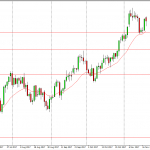Australia’s economy has shown surprising resilience this year, as consumer spending and exports continued to support economic growth. The Australian dollar, while moving off yearly highs, has gained more than 4% against its US counterpart this year. However, Aussie stocks have fallen on hard times, with the S&P/ASX Index rising just 2% this year. For currency, commodity and index traders with exposure to Australia, November will be a critical month. Below are key market moving events to look for as we head into November.

November 1: Reserve Bank of Australia (RBA) Interest Rate Decision
The RBA issue its next rate decision on November 1. By that time, policymakers will have dissected the latest inflation and employment data, giving them a clearer picture of the economy. The RBA has slashed interest rates twice this year in response to tumbling inflation, which has emerged as a unique challenge for the Australian economy. The consumer price index (CPI) fell to 17-year lows in the second quarter.[1] The overnight cash rate currently stands at 1.5%, a record low.
November 2: Building Permits (September)
Building permits are a forward-looking indicator of housing construction that reveal important information about housing demand. The monthly report will be released by the Australian Bureau of Statistics on November 2.
November 3: Trade (September)
On November 3, the Australian government will report on the country’s trade balance for September. Australia’s trade deficit stood at $2.01 billion in August, as both imports and exports flat-lined.
November 4: Retail Sales (September), RBA Monetary Policy Statement
The first week of November closes with two high profile reports. The statistics bureau will kick off the day with a report on retail sales, a key proxy for consumer spending in the economy. One hour later, the RBA will release its Monetary Policy Statement, which provides an in-depth review of economic and financial conditions impacting the Australian economy.

















Leave A Comment